Land Rover fans can enjoy new Discovery
Filed under: Weekly test drives, Autos

Land Rover’s 2018 Discovery HSE visited Grand Marais, Minnesota, powered by a smooth, silent 3.0 V6 turbocharged diesel with 443 foot-pounds of torque.
By John Gilbert
Land Rover has built all manner of luxury off-road vehicles for decades, and the company’s recent success has allowed it to establish a full-range of vehicles — all of them tough, over-achievers, all of them expensive, but filling every niche SUV buyers might be looking for.
If I had to pick one, it would be tough. There is no such thing as a Land Rover that is not enjoyable to drive or to ride in. I might take the new Velar, for its sleek styling that is remindful of the Evoque, which is low-slung and sporty.
My latest attraction, however, is the Land Rover Discovery, and it is a mind-blower for all sorts of impressive reasons. It was brought back into the U.S. market a year ago as a replacement for the LR4, the recently discontinued base entry. The Discovery no longer is the basic, bargain-priced Land Rover.
I actually drove the Discovery a couple of times before I checked out the fact sheet and learned it was a turbo-diesel. It was so quiet as to be nearly silent, but its power came on with a steady rush. Shifting was smooth all the way up, and the suspension settings kept it poised and firm in any and all cornering ventures. We drove from Duluth to Grand Marais and back one afternoon, with two adults comfortably in the rear seats. Read more
Wild Mustang GT still around, eager to be tamed
Filed under: Weekly test drives, Autos
By John Gilbert
Back about 1970, the Trans-American series, or Trans-Am, was a premier road-racing series, for the suddenly popular “ponycars” like Mustang, Camaro, Challenger, Barracuda, Firebird and later the AMC Javelin.
Mark Donohue in the Roger Penske Camaro was hard to beat, but the most colorful team was the Bud Moore Mustangs led by the inimitable Parnelli Jones. Driving the No. 15 Mustang painted a uniquely bright yellow-orange, Jones won the 1970 championship and always ran up front, referring to his own race car as being “school-bus orange.” Even though it was more yellow-orange, the nickname was as good as the fact.
While the other ponycars disappeared in a changing society gravitating toward larger and smaller cars, the Mustang ensued, coming out in various shapes and sizes, some of which now seem odd in retrospect, as Ford has recreated the Mustang in the image of those 1970-era cars. So has Dodge, with Challenger, and Chevrolet, with Camaro.
They are all captivating, in a future-retro sort of a way, but to me, the Mustang is the most refined, maybe even near perfect for recapturing that era.
A few months ago, Ford announced that it may eliminate production of nearly all its cars in favor of the newly popular and various SUVs. People throughout the country and industry were shocked, and Ford followed by announcing the only cars it would keep producing were the Mustang and the Focus. No more Taurus or Fusion, or Fiesta, which seems startling.
But as long as the the Mustang continues, all is OK.
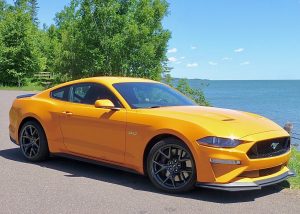
Familiar look, rock-firm platform, and 460-horsepower V8 with a 6-speed stick is Mustang GT identification.
I’ve driven some model of every Mustang ever made, and I owned a 1970 Boss 302 for over 20 years, which I believe was the best road-racing-ready production car ever. It had gone through various modifications and alterations before I sold it to a guy who wanted to restore it to original form. Among the reasons I relinquished it was because the newest generation Mustangs had become so high-tech they could compete, in my mind, with all that was great about the Boss 302.
Right after the Fourth of July, a new 2018 Ford Mustang GT arrived inmy driveway in
Duluth, Minnesota, and it showed upfor me to live with for a week. It practically glowed in an amazing metallic yellow-orange that immediately struck me as a close proximity to “school-bus orange.”
It was thoroughly enjoyable to drive, if not to ride in as a passenger. My wife, Joan, put up with it for about 5 miles of Duluth-area, obstacle-course passenger-seat riding before she announced she was less than anxious to ride in it any more — Recaro bucket seats or not.
The finely-tuned suspension has toggle-switch dash settings to adjust from normal to sport, to track, to dragstrip, to special competition, and each alteration goes from firm to firmer, and the steering stiffens noticeably. As a driver, you love it; as a passenger, it gets pretty tiresome.
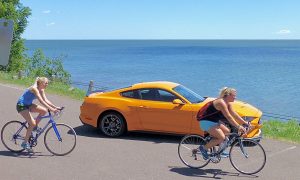
Bike-riding cousins relived Duluth college days by revisiting Hwy. 61 and cruised by for a closer look along the North Shore.
The thrill that conquers all such nitpicks, however, is the unbelievable sound that goes right from your shoe soles to your body’s soul in about one-tenth of a second. It is a spine-tingling rumble, reverberating through the neighborhood. Not really that obtrusive to your neighbors, but absolute music to your ears.
Climb in, adjust the seat, and the steering wheel, put the clutch to the floor and hit the starter button. Give it a second to let that great sound engulf you and the interior of the car, and blip the throttle a couple times if it’s not up to your standards.
Let out the clutch, gently, and try to do it smoothly enough to launch without a neck-snapping jerk or two. The big, wide rear tires grip like race tires — on dry pavement, at least — and they stick with precision in the tightest cornering, while the hyper-tuned suspension holds the car’s attitude in place.
Again, though, we go back to that engine, a 5.0-liter V8 which smoothes out from raw to low-rev power to a smoother roar as the RPMs built. Shift the slick 6-speed stick into second, then third, and you have swiftly attained any legal speed limit on any road in the country. With three gears to go.
The 5.0-liter V8 has been tweaked and refined to deliver 460 horsepower and 420 foot-pounds of torque, perfectly regulated with that 6-speed and judicioius throttle control.
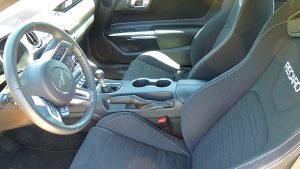
Recaro bucket seats, toggle-switch controls, racing steering wheel, and high-tech connectivity fill the Mustang GT interior.
There are still even more potent Mustang models available for more money, with superchargers and all, but the GT stands out as a true bargain in the industry, with a base GT price of $35,190. Of course, you can start adding on satellite radio, navigation and all kinds of options, and run the price easily over $40,000, but the base car is well-equipped as is.
The neat and efficient interior of the test car had all the latest electronic-gizmo features of the contemporary car world, and that includes the taught suspension-tire combination and the quick steering. It also adds traction control, and a much appreciated hill-start feature that isn’t new in the industry anymore, but is great on a steep incline when you have to make sure of your touch on the clutch as you launch. The car sits motionless as you release the clutch, a welcome aid.
I found the width of the front tires was such that you need to pay extra attention on tight turns because the width and grip almost cause the car to jerk free of your hold on the wheel, as if it wants to steer itself. Like a wild horse of its own name, it wants to take the bit in its mouth. So be ready to manhandle the steering wheel just a bit to maintain your authority.
While the driving is an exciting venture at any and all speeds, and in any and every gear, the sound, and the almost-glow-in-the-dark color make the Mustang GT a cinch attention-grabber, for passers-by, pedestrians, and, yes, officers of the law.
The front end of the Mustang GT has a ferocious look to it, with the spoiler hanging down so low you’ll also want to be extra careful how close you get to parking lot divider curbs. The large mouth of the grille is impressive, especially when flanked by the slick, and sleek, LED headlights and their enclosure.
The silhouette is pure Mustang, and not the blocky 1966 original, but the sleek fastback of the 1969 and 70 road-racing Mustangs. It looks aerodynamically slippery, and you are surprised that there is something close to adequate rear-seat headroom under the steeply sloping roof. Even more surprising is the trunk, which opens to a large-capacity cavern that will house a lot of stuff when you hit the road. And hitting the road will be a temptation you will find difficult to resist with the Mustang GT.
Ford engineers have done great work with their engines in recent years, from the EcoBoost V6 and 4s which can mimic larger engines with their turbocharged efficiency. But they have not overlooked the 5.0 V8, obvioiusly. This engine is the mainstay of the F150 pickup line, unless you go for the EcoBoost, but it feels as it belongs to the Mustang.
With all the new, high-tech vehicles coming out, in sedans, compacts, SUVs and pickup trucks, there is so much to evaluate and test that I must admit I was not desperate to get my hands on the new, 2018 Mustang, even though I knew it had been redone with revised styling, and that the old and tired standard V6 had been dropped.
Once it showed up, with its charcoal-grey spokey wheels on the low-profile tires, and that stunning paint job — which shows off its millions of metallic grains only when you get close and check it in bright sunlight — only then did I realize how glad I was that I had been chosen to spend a week with the new Mustang GT.
Then I started the engine, blipped the throttle, and considered what might happen if I headed deeper into the North woods just to see how long it would take Ford to find me.
Veloster keeps quirks, adds power and refinement
Filed under: Equinox, Autos
By John Gilbert
Ideas for new car designs come and go with regularity, and every once in a while, one comes out that startles the often-boring norms. If it’s successful while standing out amid the sameness, it might earn the ultimate praise and be called “quirky.”
In 2007, Hyundai showed its new Veloster, which was certain to be quirky as soon as it hit the pavement. That came in 2011, after it was introduced at the Detroit Auto Show. It sets new standards of being quirky, with one big door on the driver’s side, and two smaller doors on the passenger side. Who ever heard of a 3-door coupe?
Curiously, about the same time Nissan brought out its Juke, an odd-looking compact that looked like a small SUV that had partially melted. That was quirky enough to look like a sibling of the Veloster, but they both endured in their separate ways.
As the auto world turns, things change. Nissan decided to come out with a smaller crossover called the Kicks, and it will replace the Juke, apparently.
If that means the Veloster must soldier on alone, it can handle it. Motor Trend announced there would be no change to the 2018 Veloster, but Hyundai fooled ‘em. Behind the curtain, Hyundai had prepared an all-new Veloster to replace the original, as a 2019 model. It is somewhat more mainstream, with some of the odd bulges rounded off.
But the Veloster’s main trademark remains. If you approach it from the driver’s side, it is a compact little 2-door coupe; approach it from the passenger side, and it appears to be a compact 4-door sedan. In reality, it is both. The Veloster has a large door on the driver’s side, although you could still squeeze behind the driver’s bucket into the rear. But no need. On the passenger side, there are two doors, big enough in front, and conveniently sized for easy entrance to the rear.
Mike O’Brien, the affable vice president for product planning for Hyundai America, calls it a “compact sporty car,” and that covers it well. It will continue the unique 2-plus-1 door design, and its center dual exhausts. It also adds all the latest safety and security items, such as blind spot alert, rear cross traffic warning, and adds the ability to execute voice commands. Wireless charging gives it a progressive feature, and it also provides attention alert, to startle you back to full focus if it senses that your senses are fading.
Veloster used to be underpowered, with an adequate normally-aspirated 1.6-liter engine. For 2019, there is a proven 2.0-liter 4-cylinder, with Atkinson cycle valve-delay operation, as seen in the Elantra and new Kona SUV. It delivers 147 horsepower at 6,200 RPMs and 132 foot-pounds of torque at 6,000.
Those are decent numbers, but the optional engine is a prize — a 1.6-liter turbocharged 4, producing 201 horsepower at 6,000 revs and an impressive 195 foot-pounds of torque that maintains that peak from 1,500 to 4,500 RPMs — or, from idle speed to don’t-attract-the-cops.
Hyundai acknowledges that Veloster is a niche car, but it fits the company’s carefully timed plan to offer performance options on top of economy and quality at an affordable price. O’Brien points out that the median age of Hyundai buyers is 55, and for Veloster it is 49, helping lead into that lucrative younger-buyer element. Also, 45 percent of Veloster buyers traded their cars in for another Hyundai product.
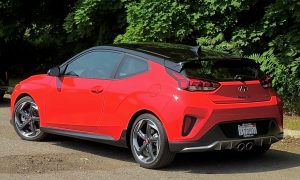
Some of the odd bulges have been smoothed out, as the Veloster transforms into a smooth sporty coupe.
The new Veloster, however, might prove to be a destination more than a stepping stone, because along with all its features that are above its quirkiness and station, it also adds a strong dose of performance.
Hyundai had a regional introduction for the Veloster and the Kona, in Detroit. Part of the reason, officials said, was to show the U.S. media that this time Detroit is serious about recreating itself and eliminating its long-standing blight and boarded-up locations. So part of the programmed drive route took us through some urban areas so we could see for ourselves. By luck, I had enlisted an old friend, Frank Washington, as codriver. Frank and I have often driven together, but this time it was special, because he’s a black man who has lived in the tough areas of Detroit, and as we drove, he was able to give me a graphic tour of what new projects are happening and what historic site it might have been.
As it turned out, we drove only the turbo 1.6 version of the Veloster, and were impressed, especially with its coordination with the 7-speed dual-clutch automatic. With paddle shifters on the 7-speed, we were impressed with the car’s handling.
We were supposed to switch to the 2.0, but instead I jumped at the chance to try the sportier “R Spec” version, with flashier appearance and Hyundai’s homebuilt 6-speed stick, that shifts as smoothly as any manual in the industry.
Suspension has been modified, revised in the front, with multilink replacing the beam unit at the rear, which enhances all Veloster new models, but the R-Spec adds special 18-inch alloys with high-performance Michelin Pilot tires with the new suspension stiffened and steering also tightened, plus an enhanced “exhaust character” gizmo. You can set the car for normal, sport, or smart, and if you like the exhaust sound, you can pipe in “active engine sound” and either increase the volumn or eliminate it electronically through the audio system speakers.
Fuel economy rates 28 city and 34 highway in the Ultimate 1.6-turbo, while the R-Spec offers 26/33. The 2.0 should get as good and maybe more miles per gallon, just because you wouldn’t be expected to drive it as hard.
With a length of less than an inch longer, at 166.9 inches, and less than an inch wider, at 70.9 inches, the Veloster has the same height and wheelbase, but inside it takes better advantage of what’s available. Mike Evanoff, manager of small car product planning, said that cargo space behind the second row seats is more than in the Volkswagen Beetle, Mini Cooper, Fiat 500, and Toyota C-HR — all of which might fit into the “quirky” corner of their showrooms, but none of which can match the Veloster’s performance.
On top of that, when you select the 1.6 turbo you get the choice of 6-speed stick, automatic, or 7-speed dual-clutch transmission with paddles, while the R-Spec offers stick only.
Perhaps the best news is the pricing of the new Veloster. The basic front-wheel-drive with the 2.0 stdarts at $18,500. Move up to the automatic and it’s $1,000 more. Moving all the way up, past the Ultimate’s impressive feature upgrades, to the top of the line Turbo R version, and it’s a mere $22,900.
For all that performance, and 30-plus miles per gallon, starting under $23,000 is a bargain for shoppers looking to downsize, or for a second car as an urban runabout, or for sending a kid off to college with a safe, solid vehicle.
Among the features, Evanoff said the customers most-want the blind-spot detection/warning, but what might be most important is a sophisticated new advanced emergency braking feature, which not only warns you if you’re closing too fast on the car ahead, but will apply full braking to help you stop in time to avoid an impending accident.
Known for building durable and trouble-free cars with great mileage, at bargain prices, the value and safety built in to the Veloster will now be augmented by a new high-performance division, also, which will be called “N Brand.” Other models will follow, and there will be aftermarket availability in the near future. The “N” comes from Namyang, which is the core development site in South Korea for all of Hyundai’s somewhat subtle performance operations.
The punch in the Ns will come from ideas brought forth by Albert Biermann, hired away from BMW, where he had a hand in developing that company’s “M” models at all levels. Maybe it’s logical that he follows up the M with the N. And maybe it’s about time Hyundai takes so much of what it’s learned in various types of racing and pours it into a high-performance specialty division.
Otherwise, settling for the “normal” new Veloster is impressive to begin with. It’s been most of a decade since Hyundai stepped out of its mundane stature and developed and built its own high-tech engines, strengthened its bodies and frames with high-strength steel from its own plants, built its own transmissions, added considerable style, and steadily improved on its reputation for high quality and efficiency with cars that offer more than the modest prices might suggest. The 2019 Veloster now means you can choose to combine that reputation with the cute and quirky leader and now gain some real performance fun.
Rams, Jeeps, 797-hp Challengers await 2019
Filed under: Equinox, Autos
By John Gilbert
When Dodge Charger and Challenger were powered by almost-obscenely powerful Hemi V8 engines, the curiosity was what could Dodge do next? Next, it turns out, was the definitely-obscene Hellcats with 700 horsepower in 2015. That, we figured, was the ultimate tire-screecher. Then, a year ago, Dodge brought out the overwhelmingly-obscene 2017 Demon, with still more power and torque, and a wider-platform for enhanced stability.
Now it’s 2018, and amid rumors that companies such as Ford, and Dodge parent FCA (Fiat-Chrysler Automobiles), are considering reducing or discontinuing cars in favor of building more and more profitable trucks, we approached the “What’s New for ’19” event at the FCA Proving Grounds in Chelsea, Michigan, with even more curiosity. Turns out, a trio of crazy-powerful Challengers are coming out, and all we are lacking is new adjectives to describe them.
Back in the real world, I heckled a few good friends at the company about when it would switch over all its factories to strictly Ram trucks and Jeeps, but they didn’t take the bait. My heckle was based on the undeniable facts measuring the year-to-date production and sales of all FCA vehicles. Updated figures for the first six months of 2018 show Ram sold 189,997 pickups through June, and 110,382 Wranglers.
Those are by far the top sellers for FCA worldwide. Wrangler, all new in the last year and vastly improved overall, including the spectacular new Chrysler-built 2.0 turbocharged engine, increased sales by 38 percent from last year, through June. Ram’s top-selling figure, on the other hand, actually decreased in sales for the same period by 8 percent, because the completely redone 2019 Ram was not fully distributed to dealers early this calendar year.
However, ranking all the rest of Dodge, Chrysler, Fiat and Jeep vehicles, the order following 1. Ram and 2. Wrangler for the first six months of this year were: 3. Grand Cherokee, 91,589, barely holding off 4. the smaller Cherokee, which showed a 31 percent increase to 91,286, and 5. the Compass, also entirely new, at 72,368 for a whopping 315-percent increase. Just shows what you can do when you do a good job of reinventing a model.
The rest of the top dozen are 6. the Caravan (70,511), 7. Pacifica (53,910), 8. Renegade (41,906), 9. Journey (41,023), 10. Charger (34,786), 11. Challenger (30,545), and Durango (27,378).
Ram remains the king and is certain to increase sales as 2018 continues, but after noting the 189,997 sales for six months, if we add together all the Jeeps — Wrangler, Grand Cherokee, Cherokee, Compass and Renegade — sales are a combined 407,531.
Those are some surprising numbers, and remember, they are only for the first six months of 2018. But the Caravan, which seemed destined to be discontinued in the face of the all-new Pacifica, not only is soldiering on, it watched Pacifica sales improve by 14 percent and improved its own status to outsell its much-heralded cousin. Read more
Regal sedan remains, as stunning GS hatch
Filed under: Weekly test drives, Autos
By John Gilbert
When I had the chance to road-test a new Buick Regal Tour-X a few months ago, I was impressed that the stately old General Motors icon had the audacity to build a station wagon, let alone a long and slinky European-style, all-wheel-drive wagon, powered by a turbocharged 4-cylinder engine.
The traditional Regal sedan, we were told, was no more, and the wagon would carry on. Well, not so fast.
I have now had the chance to spend a week with the new Buick Regal GS, which doesn’t look anything like the current Regal midsize sedan, but then, it doesn’t look anything like the Tour-X wagon, either.
Personally, hatchbacks usually make a lot of sense, and I don’t subscribe to the trend of separating hatchbacks from sedans, any more than I don’t criticize others for failing to point out that all SUVs must also be identified as hatchbacks. Regardless, I would have to say that the new Regal GS is the best-looking car from Buick since…well…maybe ever!
That comes from someone who was never a dedicated Buick fanatic, but who also thought that the current Regal was an outstanding car and the first Buick I can recall that could ignite buyer’s temptation in me. When I learned that previous Regal was a U.S. branded model of a new German Opel Vectra, its progressive leap upward made more sense. It was even made in Europe for a while, while Buick geared up to build it in North America.
Now we find out that if the newest model of the Buick Regal germinated (Germanated?) from the new model Opel Insignia, a longer and classier car than the Vectra/Regal, but one with smoothly aerodynamic lines that exude grace and streamlined speed. General Motors has sold off Opel, which made me curious what Buick would do without its trusty German models, but now we find out that in their separation, Opel promised to keep building cars for Buick, and the Regal GS is a version of the new model, stretched and fitted with a hatchback over its generous cargo area. That allows for a sleek, fastback silhouette.
Parked downtown in Duluth or Minneapolis, we were surprised at how much attention the new Regal GS generated. People would stop on the sidewalk and wait until we returned to the car to quiz us about it. Generally, they would leave, shaking their heads in a real-life version of those inane “Real people, not actors” GM commercials, and mutter things like, “That can’t be a Buick,” or “Sure doesn’t look like a Buick.”
Buick should take note of the accolades, because they are uncommon these days, and comparatively unprecedented for Buick. But valuable.
The bright red Regal GS test car has a neat grille, and the swept-back lines come together in a well-styled rear end, as well. As a 4-door, it’s actually a 5-door with the hatch, but we don’t care, despite the reluctance U.S. buyers have for hatchback cars, as though the word itself is objectionable.
Not that the Regal GS is small. It is 192.9 inches long, sitting on a 114.4-inch wheelbase, and it weighs a comparatively hefty 4,270 pounds. Much of that can be attributed to the all-wheel drive.
The Regal GS has a base price of $39,990, which is rather stiff, and the test car was loaded enough to show $44,115 as the bottom line.
I’m an advocate of choosing a turbo 4-cylinder rather than a larger V6 if it will do sufficiently, because of obvious advantages in fuel economy, but a lot of U.S. buyers want their V6es, so the Rebel GS comes armed and dangerous with GM’s corporate workhorse 3.6-liter V6, which easily powers all four wheels, and perhaps can tow just about anything.
The 3.6 churns out 310 horsepower at 6,800 RPMs, and 282 foot-pounds of torque at 5,700 revs. The 9-speed automatic transmission shifts surely and efficiently, and is explained as an “active twin-clutch” transmission. In a Buick? No kidding?
There is a mode switch, and we drove almost exclusively in the sport setting, which wasn’t harsh, and helped stability with much-appreciated tighter steering and firmer suspension.
It wouldn’t be a Buick without considerable doses of comfort, and the Regal GS has very comfortable and supportive front bucket seats, and also comfortable rear seats. The rear seats deserve extra merit, because they are set into a space that is, in a word, huge. With the front buckets set back as far as I would set them as a 6-foot driver, there is a lot of headroom and enormous leg and foot-room in the rear.
The car came equipped with Continental tires mounted on 19-inch alloy wheels, and the size of those tires may have helped the Regal GS handle to near-sporty-sedan standards, although they did seem to cause more than a little noise from Duluth’s minefield-like street irregularities.
Changing from the Regal wagon’s turbo 4 to the Regal GS’s only-choice V6 takes a hit in fuel economy, although an EPA estimate of 19 city and 27 highway is obtainable and isn’t bad for a big, heavy, all-wheel-drive car. But if the turbo 2.0-liter 4-cylinder gives up some drag-racing potential to the 3.6 V6, its performance is certainly adequate, while its fuel economy would be at least 5 more mpg on the highway.
With all its styling grooves and contours, I had trouble deciding which angle of the Regal GS I liked best, and it turned out to be pretty much a tie. Pick an angle, any angle, and you’ll appreciate the car’s appearance.
That brings us back to the old cliche from decades-past ad campaigns: “Wouldn’t you really rather have a Buick?” For the first time in a long time, maybe ever, I can say the answer could be a decisive “Yes!”


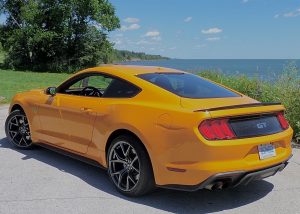
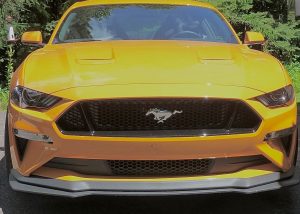
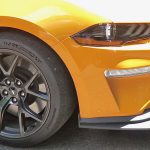
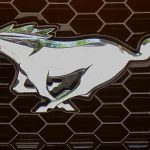
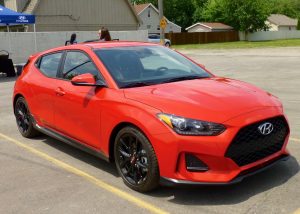
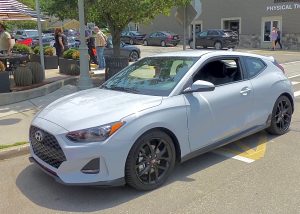

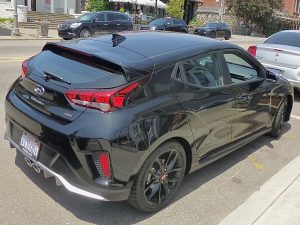
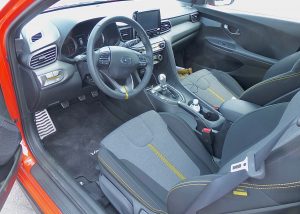
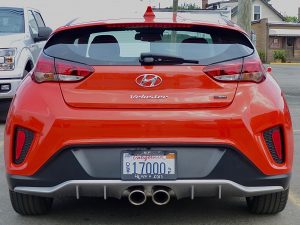
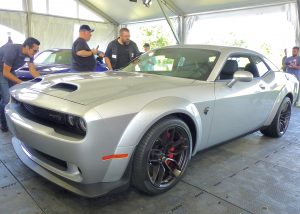
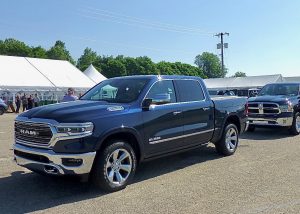
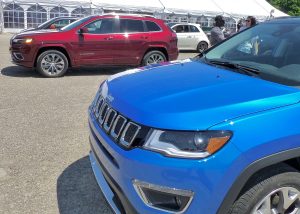
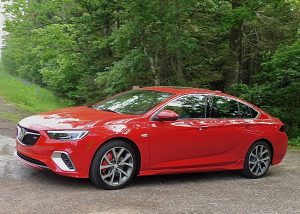

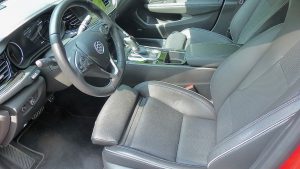
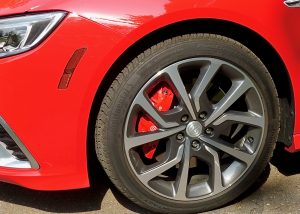
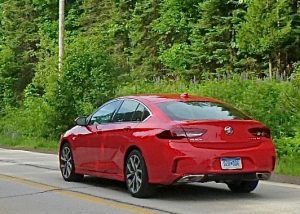
 John Gilbert is a lifetime Minnesotan and career journalist, specializing in cars and sports during and since spending 30 years at the Minneapolis Tribune, now the Star Tribune. More recently, he has continued translating the high-tech world of autos and sharing his passionate insights as a freelance writer/photographer/broadcaster. A member of the prestigious North American Car and Truck of the Year jury since 1993. John can be heard Monday-Friday from 9-11am on 610 KDAL(www.kdal610.com) on the "John Gilbert Show," and writes a column in the Duluth Reader.
John Gilbert is a lifetime Minnesotan and career journalist, specializing in cars and sports during and since spending 30 years at the Minneapolis Tribune, now the Star Tribune. More recently, he has continued translating the high-tech world of autos and sharing his passionate insights as a freelance writer/photographer/broadcaster. A member of the prestigious North American Car and Truck of the Year jury since 1993. John can be heard Monday-Friday from 9-11am on 610 KDAL(www.kdal610.com) on the "John Gilbert Show," and writes a column in the Duluth Reader.